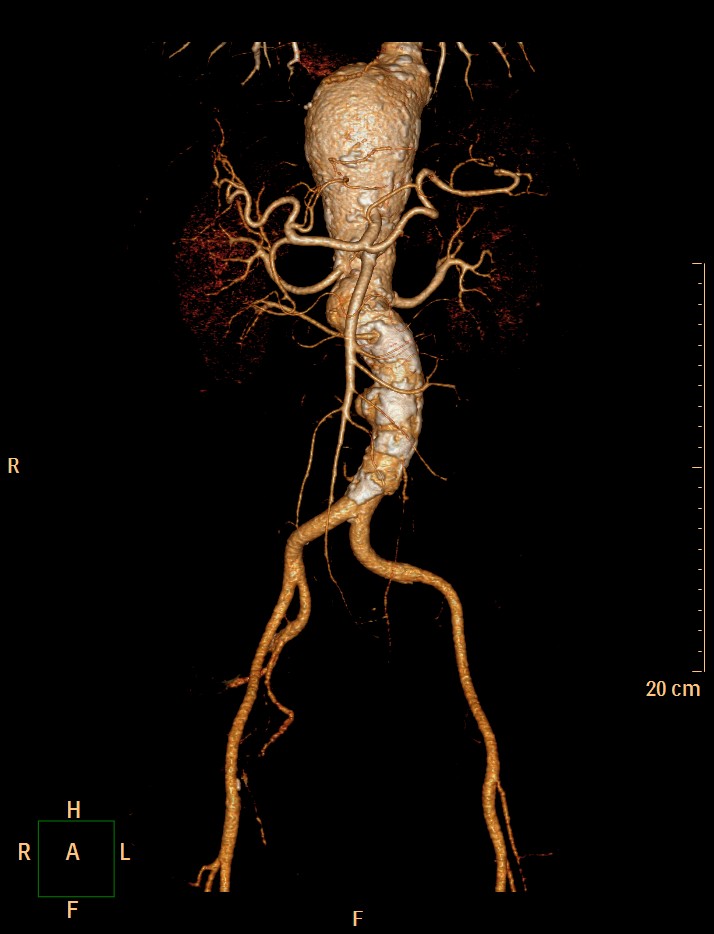Back to Annual Meeting Program
Utilizing Hybrid graft in Open Repair of TAAA to Decrease Mesenteric and Renal Ischemia Time
Shadi J Abu-Halimah
WVU-Charleston Division, Charleston, WV
INTRODUCTION:
Open repair of Thoracoabominal aneurysms TAAAs can be associated with significant morbidity and mortality. Mesenteric and renal ischemia is one of the major causes of icrease morbidity and several new techniques to perfuse these organs while clamping show to improve outcome. The GORE® Hybrid Vascular Graft has been used for debranching procedures with good results. This is the first case of utilizing this technology in an open TAAA repair with main aortic graft and 4 GORE® Hybrid Vascular Grafts (HVG) to Celiac artery, SMA and both renals with total ischemia time to these organs of 30 minutes.
METHODS:
A 56 year old female patient with 6 cm TAAA type 3. We discussed with the patients options and decided to preoceed with open repair. Under general aneshesia and after inserting a CSF drain, through a left lateral incision at 8th intercostal space aortic exposure was done with isolation of proximal, distal aorta, both renals, CA and SMA. On the back table a 20 mm tube PTFE graft was brought and 4 holes were created on its side. GORE® HVG X 4 were sutured and marked to this tube graft with there viabahn component not deployed yet. After clamping and creating the proximal aortic anastomosis the graft was stretched and each GORE® HVG was insreted for 2 cm into both renal arteries the into SMA and finally CA through there ostiums. each graft was secured with couple of tacking stitches to the native wall of the aorta to prevent stents from pullimg out of these arteries. Finally distal anastomosis was created at the aortic bifurcation. Each of the above arteries took around 2 minutes to establish blood flow with total ischemia time of 30 minutes till we have renal and mesenteric flow.
RESULTS:
Post operatively patient has normal renal and liver funtion and start tolerating diet on post op day 4. Her post operative course was complicated by brief period of ICU pshycosis probably related to alcohol withdrawal and urinary tract infection. The patient was discharged home on post operative day 10.
Three months follow up CT angiogram show successful repair of the aneurysm with patent bypasses to both renal arteries, SMA and CA.
CONCLUSIONS:
Open repair of TAAA can be associated with high morbidity and mortality especially in cases of mesenteric or renal ischemia. Utilizing GORE® HVG as a premade garft can decrease need for visceral perfusion and decrease post operative complications from visceral and renal ischemia. We propose that also the use of viabahn stent may decrease incidence of anastomotic stenosis. Any stenosis at the ostium of these arteries may limit this technique.
Further testing of this new technique will be applied for future patients for more validation. 

Back to Annual Meeting Program

